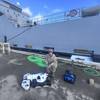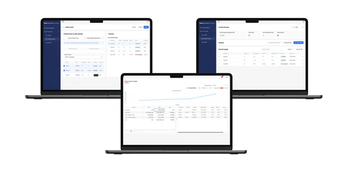Sea School Lifeboatman Course Includes Hands-On Practical
Finding a ship with gravity davits, that will invite an outsider to participate in lowering drills, is no easy task. Schools that teach AB/lifeboatman courses often do a disservice to the mariner by suggesting this method of obtaining the required practical training, knowing full well that finding this arrangement is nearly impossible.
Sea School, the College of Nautical Knowledge, admits to some guilt, in the past, in making this recommendation. However, today it can announce that its two-day U.S. Coast Guard Approved Lifeboatman course includes hands-on practical lowering of a lifeboat with full size gravity davits and rowing a real lifeboat on Tampa Bay.
A Z-card or merchant mariner document (MMD) is available with a few variations. For Able Seaman (AB) special, Limited or Unlimited the requirement is that the lifeboatman rating must be included.
For a person assigned to lifeboat duty on a vessel where he may not be considered part of the crew, (a domestic gambling vessel where croupiers maybe required to assist in abandon ship) the Z-card may be issued as Lifeboatman without the AB rating.
In the past the U.S. Coast Guard used about 13, 1/4-scale models at Regional Exam Centers (REC) to accomplish the practical requirements. Recently, the National Maritime Center (NMC) of the USCG, announced that the ¼-scale models could not be used any longer for this purpose. This, then makes a real-life gravity davit/lifeboat a scarce but valuable tool for teaching a U.S. Coast Guard course.
The SS American Victory, a vintage 1945 victory ship, was brought into Tampa Bay to be transformed into the American Victory Mariners Memorial & Museum Ship. This is to provide a unique and realistic venue for meetings, reunions, receptions, seminars and other special events, and to present interactive maritime educational programs. Sea School has been invited to participate in fulfilling this goal by holding Coast Guard approved courses, including lifeboatman aboard this superb teaching platform. In doing so, the ongoing classes will add to the flavor of salty seamanship that this vessel exudes.
The demand for this hands-on practical exercise has exceeded all expectations of the Sea School staff. “All the work that we put into rigging and repairing the davits was worth all the sweat equity,” said Sea School Director Ed Morris (USCG ret.), Captain of the lifeboatman project for the school.
Initially it was planned to provide this course/service on an as-need basis. However since announcing the commencement of classes in mid January the number of mariners calling to be included in the schedule will require this exercise to be offered much more often. Because the class size is limited by Coast Guard edict, potential students should call in advance to assure a position at a rowing station.
Note that AB and Lifeboatman are two separate courses and are more often than not, combined. The AB portion of the approved course requires five days. This meets the requirement for those who already have Lifeboatman. The lifeboatman portion requires two days. One day classroom and one day practical lowering and boat handling. For certain mariners, NMC has indicated that the lifeboatman portion will meet STCW 95 requirements for survival craft training.
Ed Morris comments, “If we can figure how to keep the callouses off these deck officers soft hands, we may be able to challenge other rowing groups to some hot races up and down the Tampa Ship Channel”. He continued ,”We are working on a small waterproof drum to beat out cadence. In the meantime, it’s stroke, stroke, stroke.”











